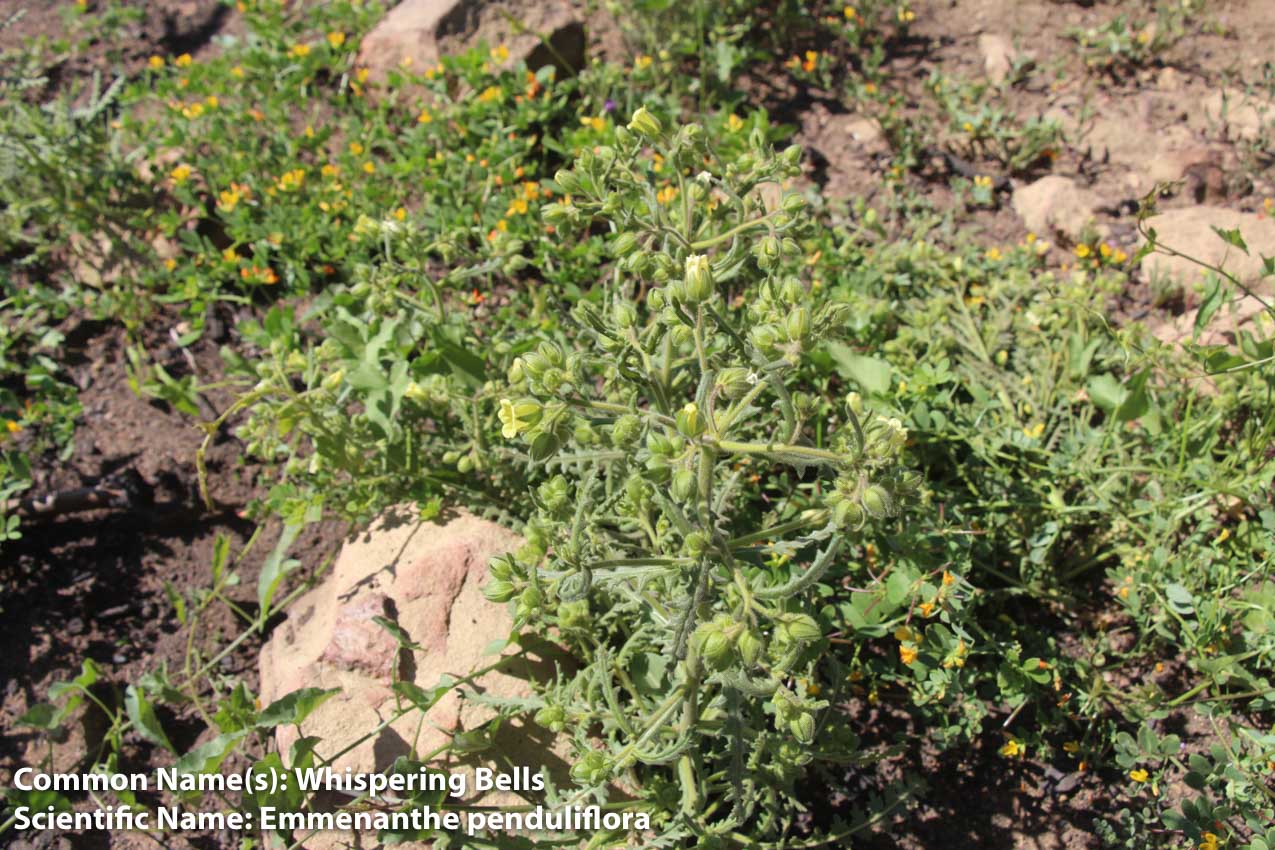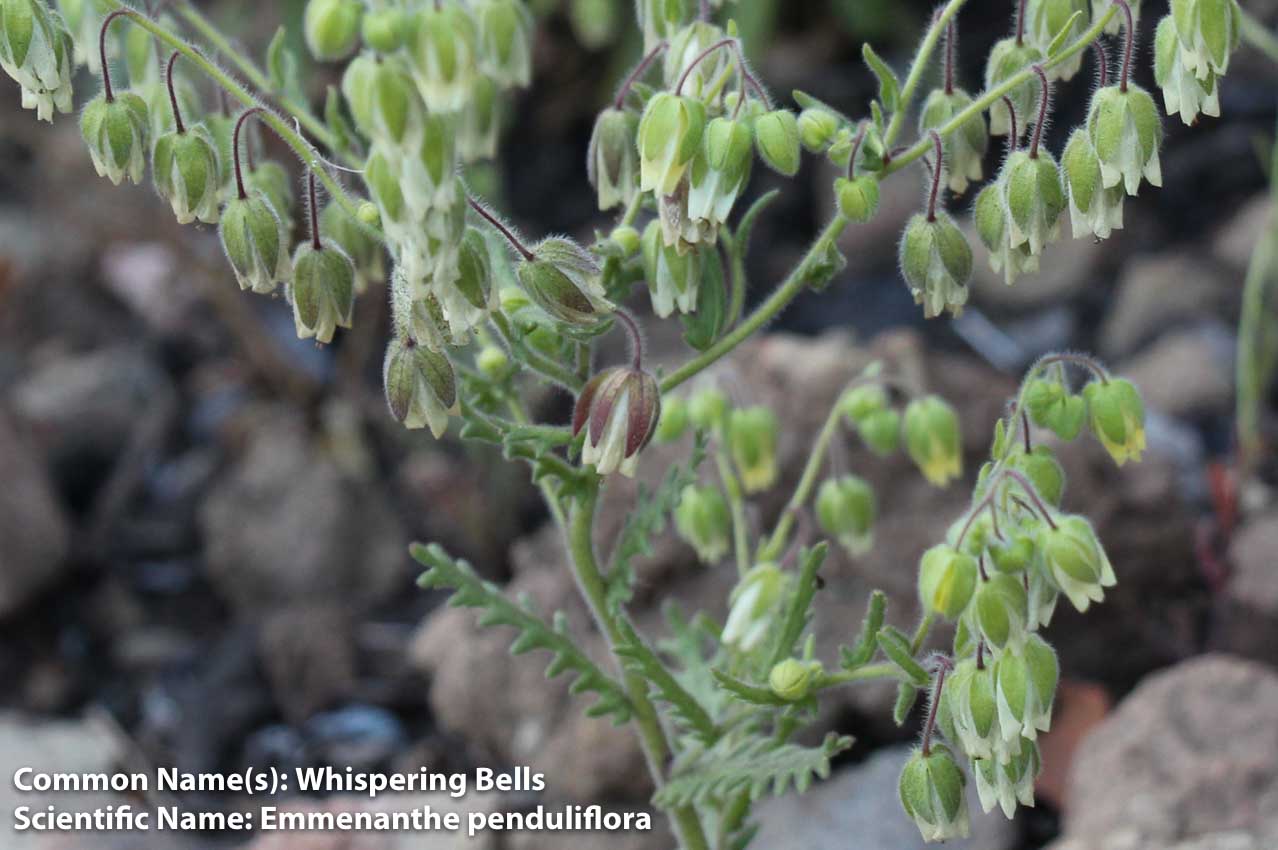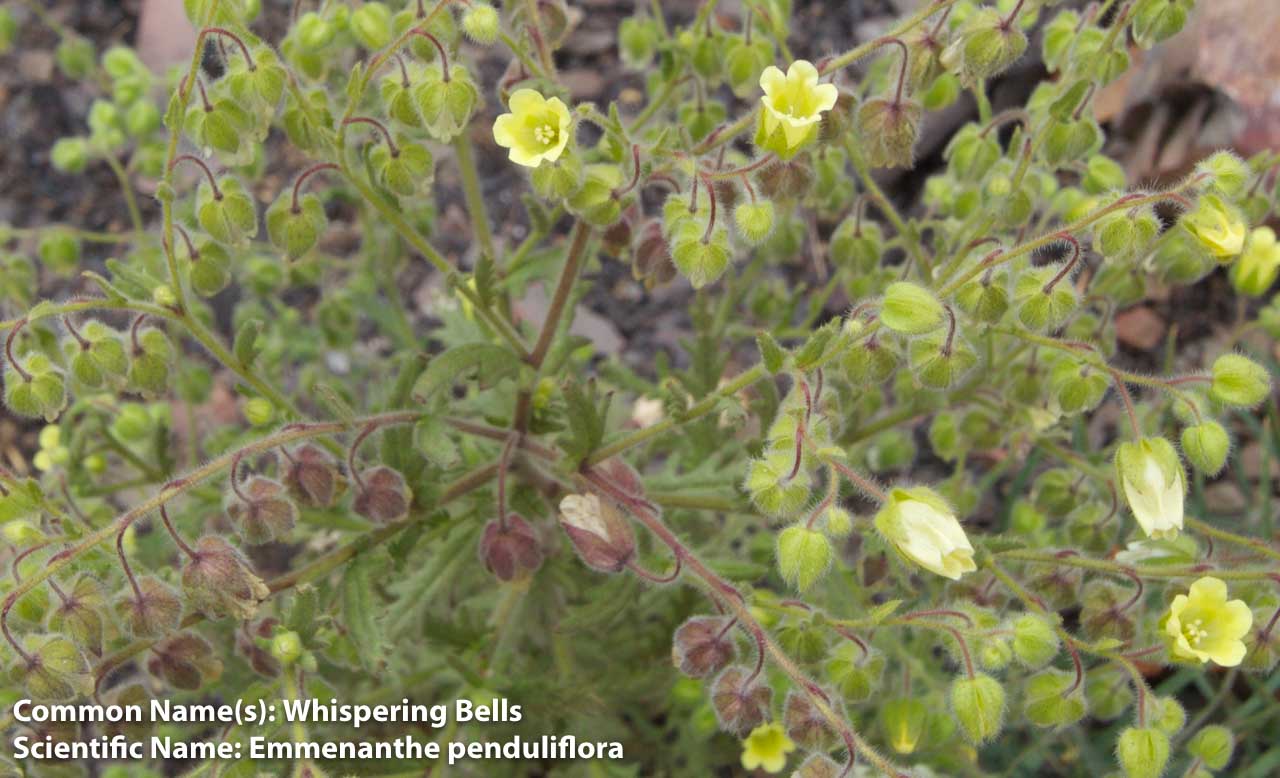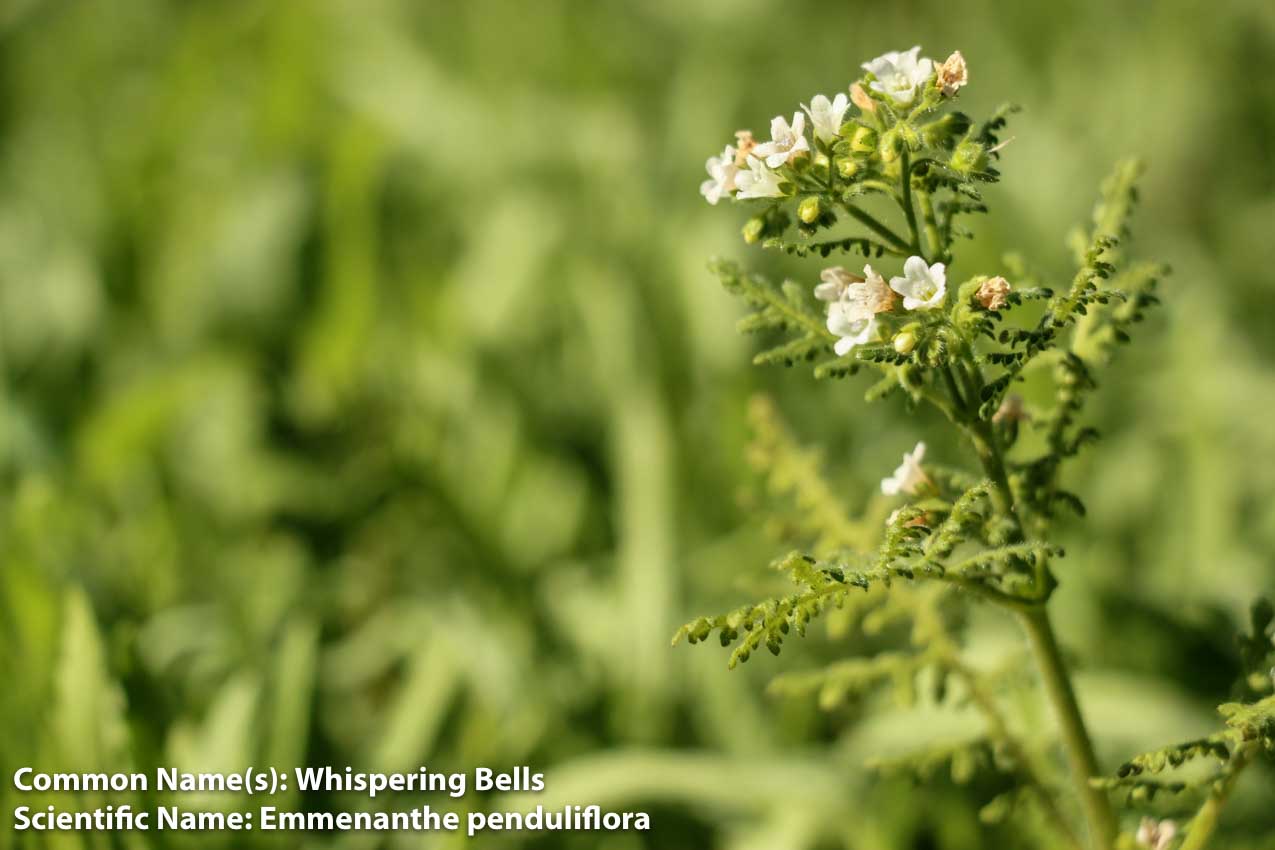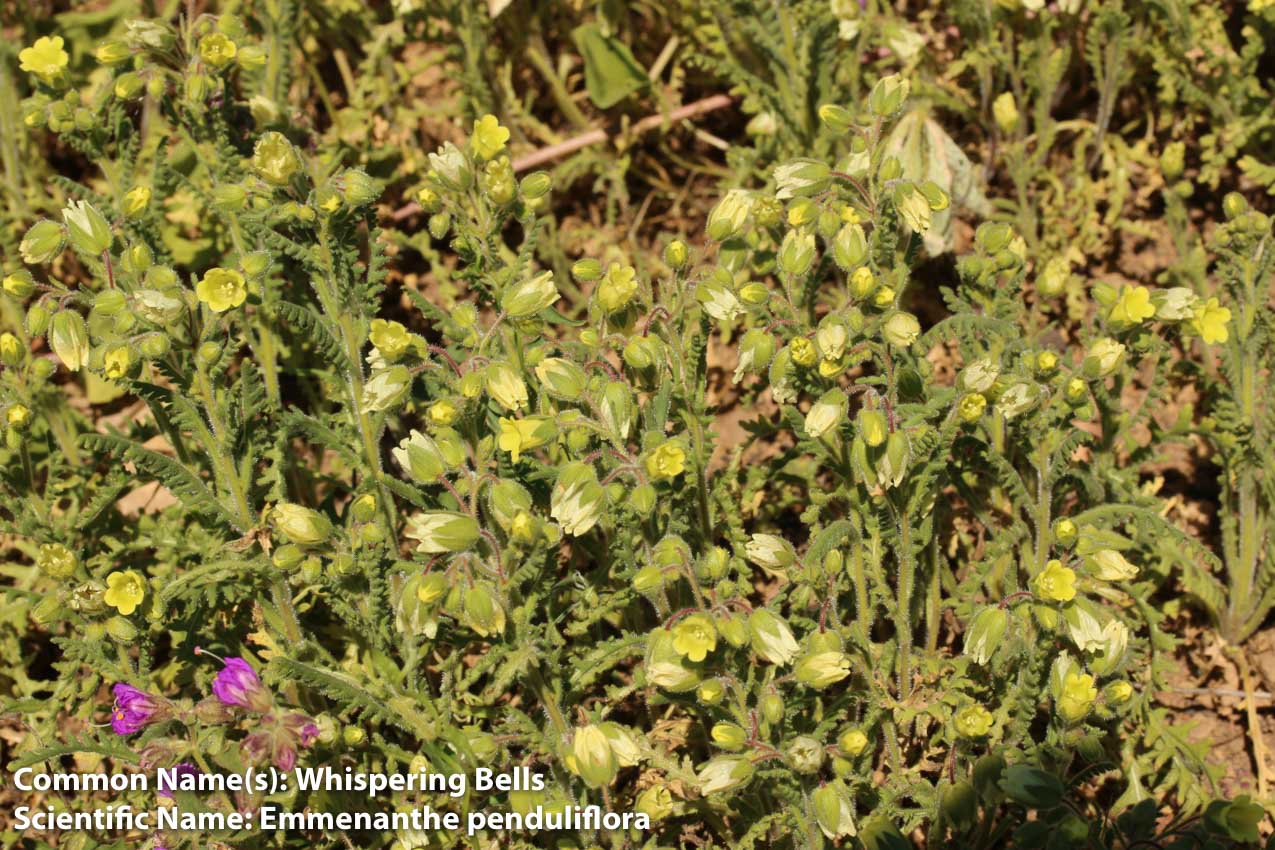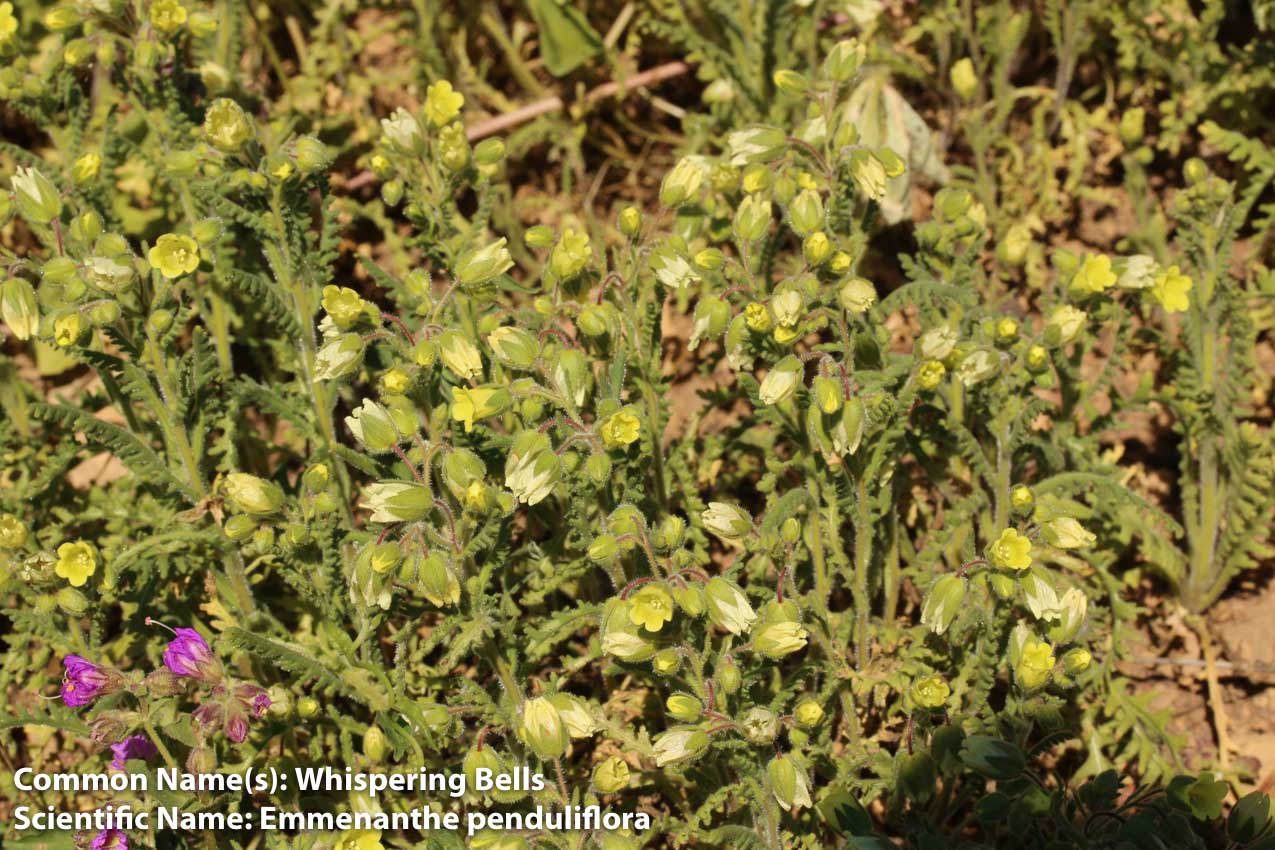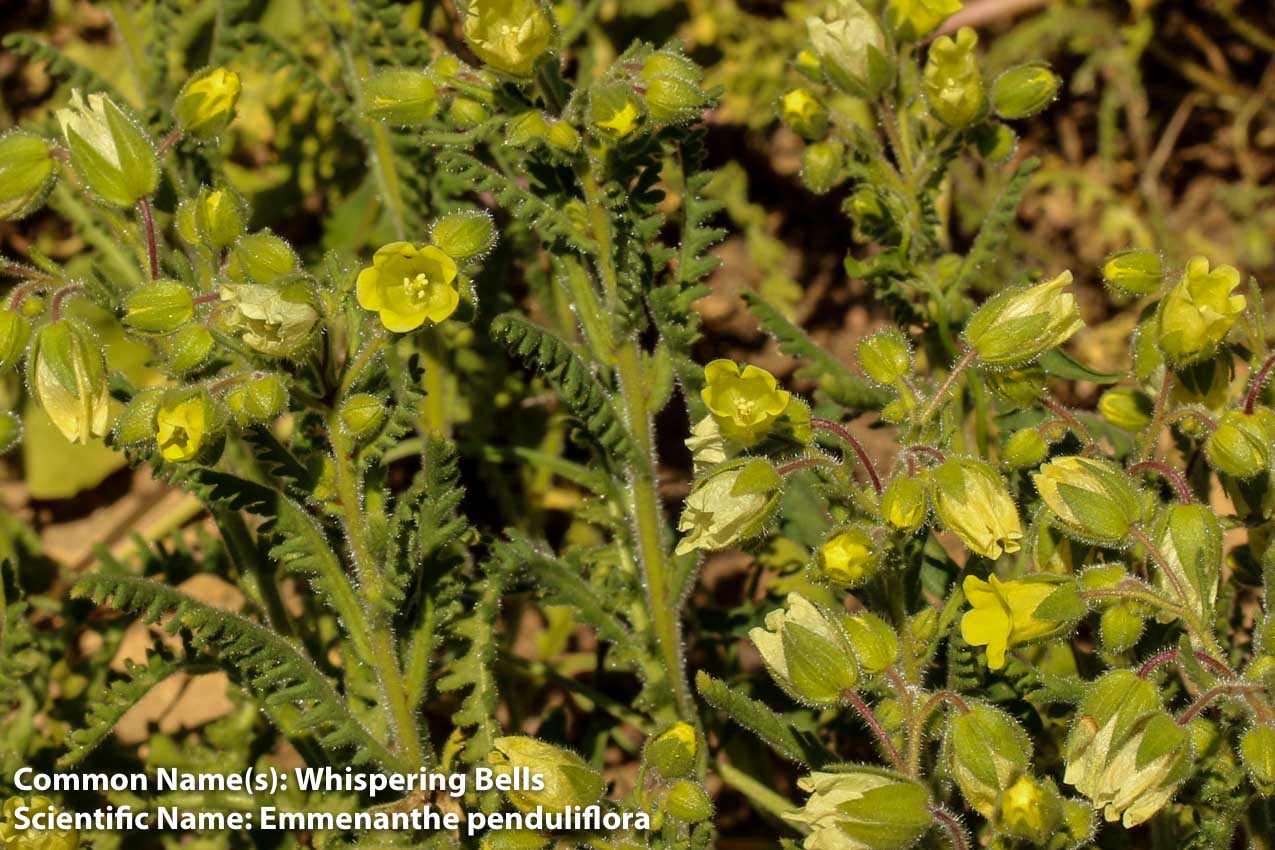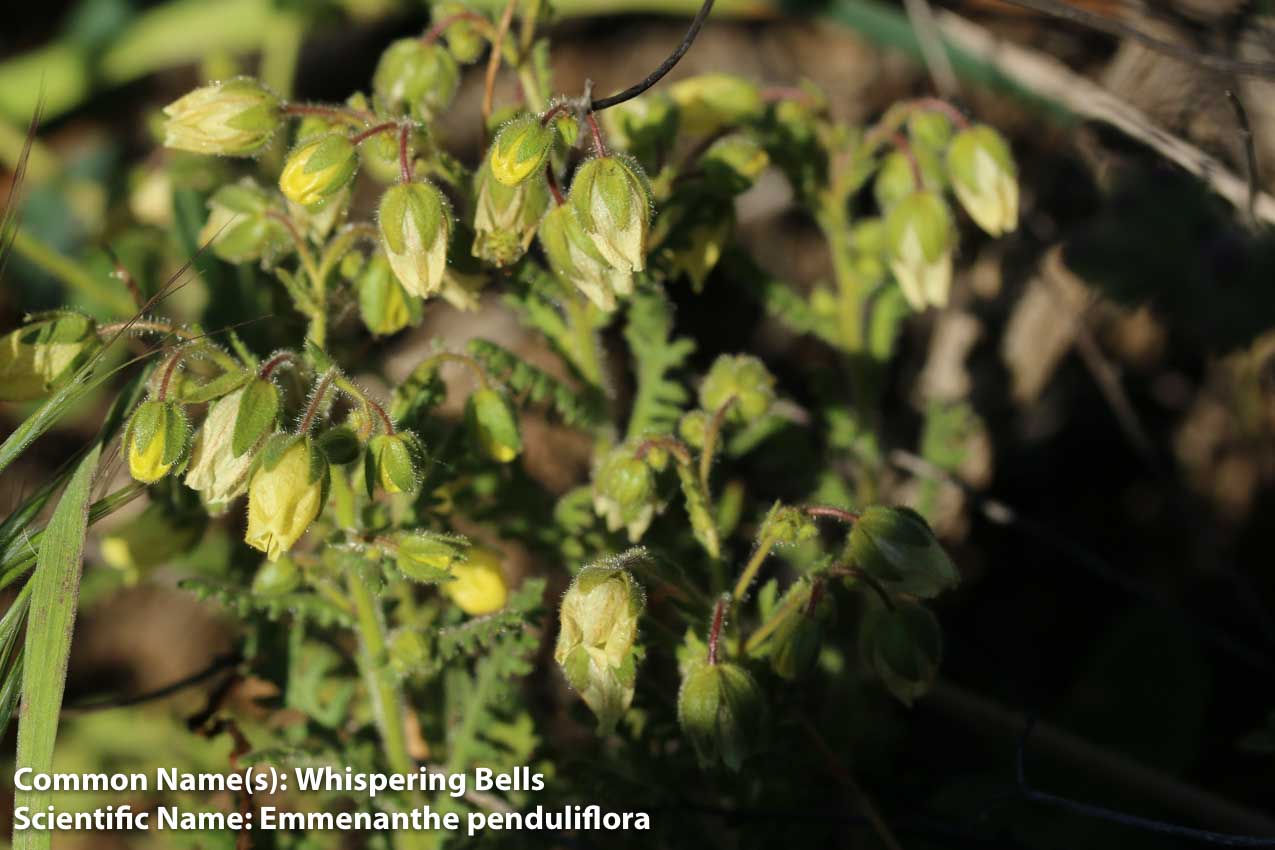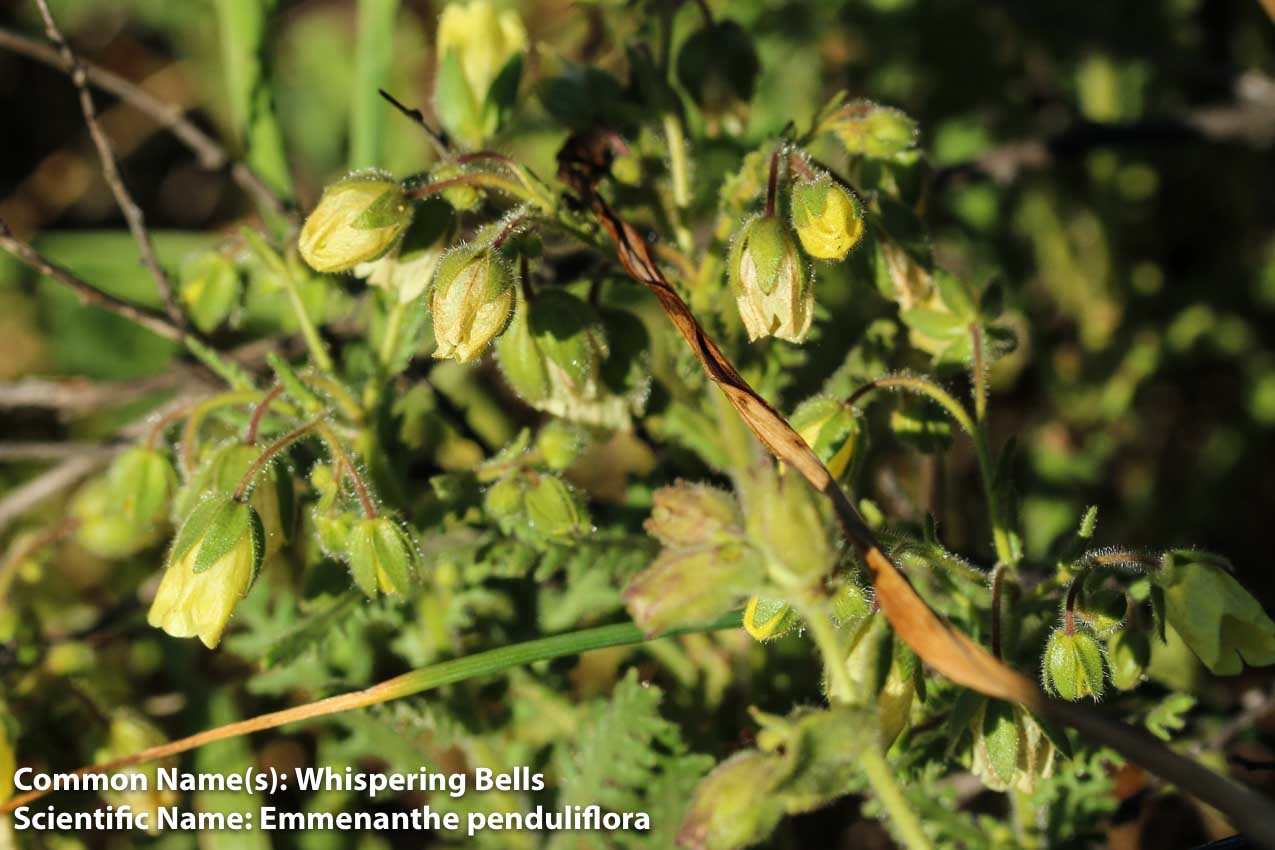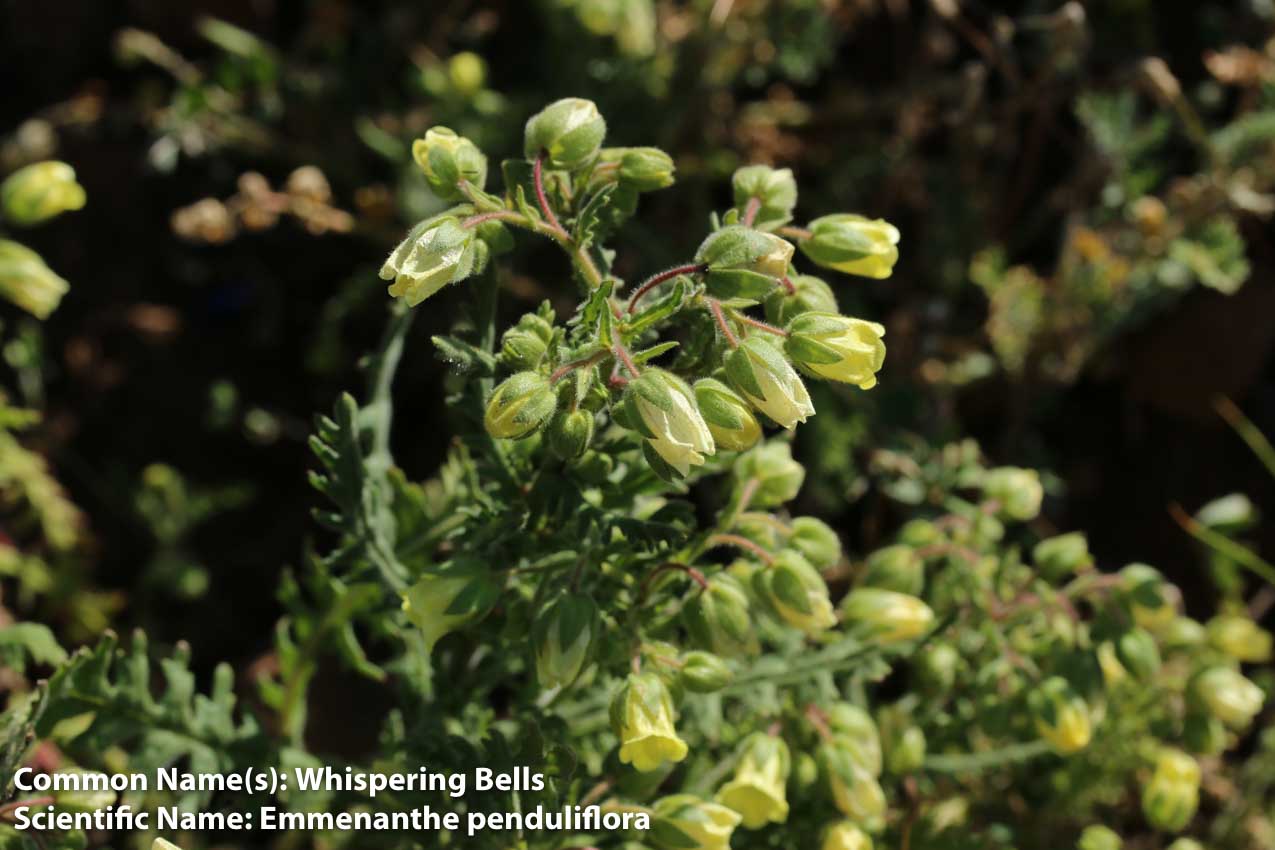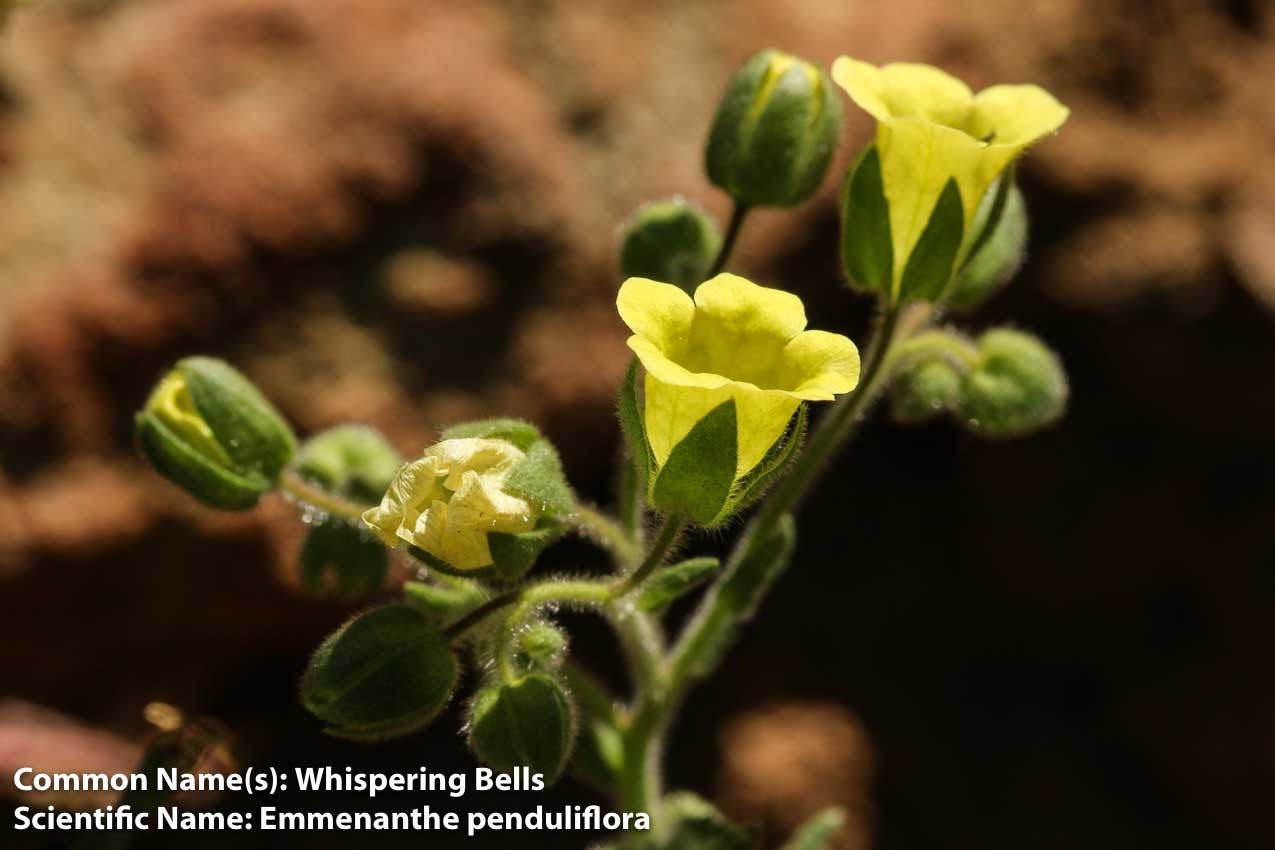Whispering Bells
- Emmenanthe penduliflora
| Common Name(s): | Whispering Bells |
| Scientific Name: | Emmenanthe penduliflora |
| Family: | Boraginaceae (Borage) |
| Plant Type: | Annual |
| Size: | up to 20 inches tall |
| Habitat: | Chaparral, Coastal Sage |
| Blooms: | February to June |
| Fire Response: | Fire Follower |
Whispering Bells or Emmenanthe penduliflora - this beautiful plant is a fire follower and in fact is one the most common plants you may have seen after a fire - Milt's book designates this plant a "dominant" fire follower".
It was known that certain plants were well adapted to fire in the Chaparral biome. Leave it to those scientists who determined that fire was but one component of seed germination. Turns out that Nitrogen dioxide even in tiny amounts causes Whispering Bells to germinate their seeds. This plant does well in Grasslands and in areas where there is a an openings in chaparral. Interestingly Whispering Bells that grow in the desert where fires are scarce are not fire followers - these seeds germinate by having the wind push them across the desert floor. All that bumping and scratching along the desert floor causes cracks which then can allow moisture in to start the germination process. External Link
Whispering Bells is an annual that produces lots of flowers. The plant exudes a sticky liquid with a somewhat pleasant odor - according to Milt's book. The plant comes up from a weedy-looking basal rosette of sharply lobed leaves. The leaves are green, alternate, narrow, and pinnately lobed with saw-toothed edges. The stems and leaves are covered in glandular hairs. It produces long pendulous racemes with small yellow or pink bell-shaped flowers. When the flowers dry they become light and papery. The dry hanging flowers make a rustling sound when a breeze comes through, giving the whispering bells its common name. The dry flower also contains a fruit about a centimeter wide.
Some guides designate this plant as a member of the Boraginaceae family and some Hydrophylloideae (waterleaf) - read more. For my purposes it sufficient to know what the plant looks like and some facts about germination, life cycle and where you might find this plant. The Botanists will figure the taxonomy out right after you purchase that shiny new guide to wildflowers! Personally, being able to identify the plants and flowers I encounter along the trails enriches my experience - it probably does for you as well - it is too bad there are not more people who are as interested.
Link to Calflora.net - the best source of this fascinating information
Name Origin: alludes to Greek for "flower that abides" - the flower does not fall off as it fades. Penduliflora suggests that the flower hangs down as it ages. Amazing descriptions in some of these flower names!
Contributed by George Sherman
Featured Plants in the Boraginaceae (Borage) Family:
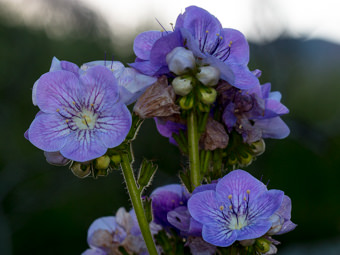
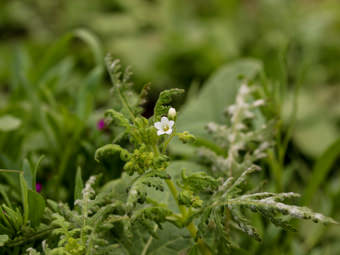
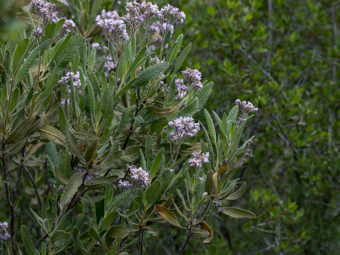
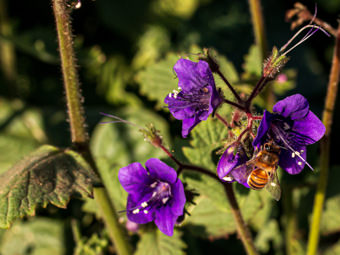
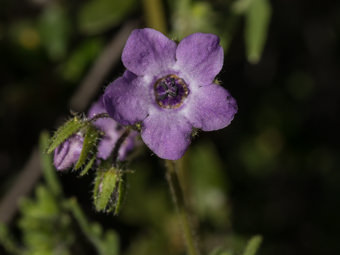
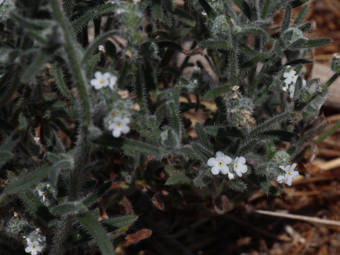
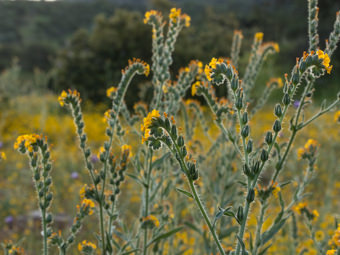
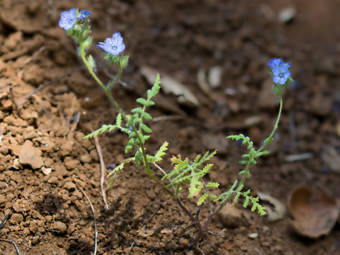
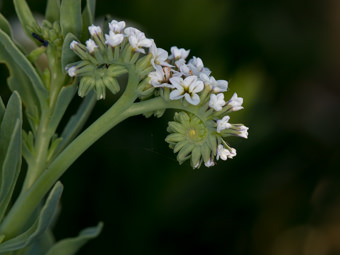
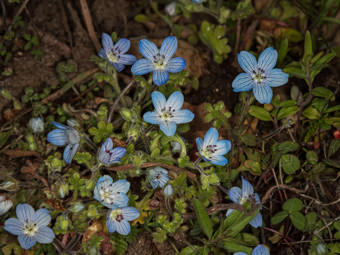
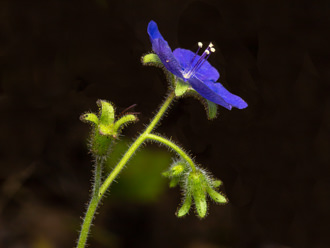
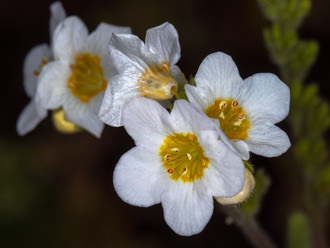
Last modified: August 21 2024 15:18:52.
Number of Images: 12
Image Size Total: 1,854,287
References:
Wildflowers of the Santa Monica Mountains, by Milt McAuleyFlowering Plants: The Santa Monica Mountains, Coastal and Chaparral Regions of Southern California, by Nancy Dale
Chumash Ethnobotany: Plant Knowledge Among the Chumash People, by Jan Timbrook
Leaf Shapes Primer - Botanical Terms for Leaves: - Link

